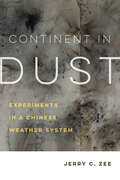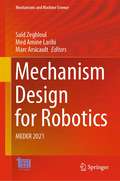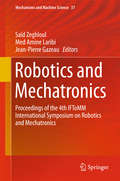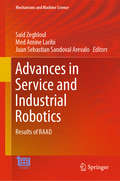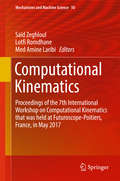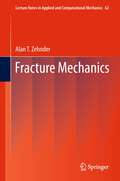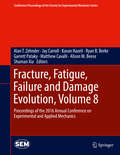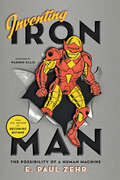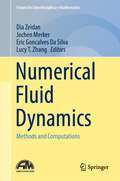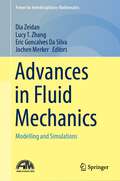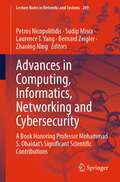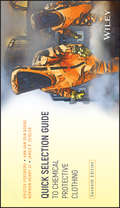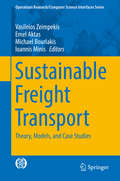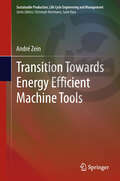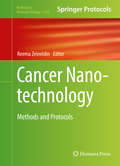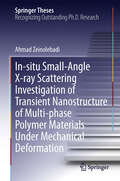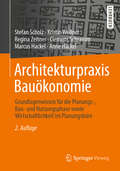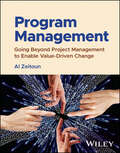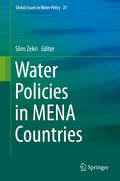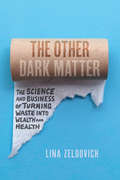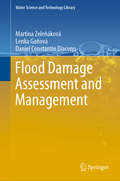- Table View
- List View
The Legal Dimensions of Oil and Gas in Iraq
by Rex J. ZedalisThis volume presents the first and only comprehensive examination of the legal issues surrounding international debt recovery on claims against Iraqi oil and gas. In addition to presenting a snapshot view of Iraq's outstanding debt obligations and an analysis of the significance of the theory of odious debt in the context of the Iraqi situation, the list of legal issues examined includes relevant provisions of the Iraqi Constitution of 2005, controlling Security Council resolutions, pertinent articles of the KRG oil and gas law (No. 22) of 2007 and the many nuanced and technical questions raised thereby, legal pronouncements aimed at protecting Iraqi oil and gas and those adopted in selected other nations, and general problems associated with recognition and enforcement of awards or judgments that may involve such oil and gas or revenues from the sale thereof. Also discussed are the lessons learned by the handling of the Iraq debt experience and the transferability of those lessons to future situations in which resource-rich nations may have outstanding financial obligations to other members of the world community or their nationals.
Continent in Dust: Experiments in a Chinese Weather System (Critical Environments: Nature, Science, and Politics #10)
by Jerry C. ZeeIn China, the weather has changed. Decades of reform have been shadowed by a changing meteorological normal: seasonal dust storms and spectacular episodes of air pollution have reworked physical and political relations between land and air in China and downwind. Continent in Dust offers an anthropology of strange weather, focusing on intersections among statecraft, landscape, atmosphere, and society. Traveling from state engineering programs that attempt to choreograph the movement of mobile dunes in the interior, to newly reconfigured bodies and airspaces in Beijing, and beyond, this book explores contemporary China as a weather system in the making: what would it mean to understand "the rise of China" literally, as the country itself rises into the air?
Mechanism Design for Robotics: MEDER 2021 (Mechanisms and Machine Science #103)
by Saïd Zeghloul Med Amine Laribi Marc ArsicaultThis book presents the proceedings of the 5th IFToMM Symposium on Mechanism Design for Robotics, MEDER 2021, held in Poitiers, France, 23–25 June 2021. It gathers contributions by researchers from several countries on all major areas of robotic research, development and innovation, as well as new applications and current trends. The topics covered include: theoretical and computational kinematics, mechanism design, experimental mechanics, mechanics of robots, control issues of mechanical systems, machine intelligence, innovative mechanisms and applications, linkages and manipulators, micro-mechanisms, dynamics of machinery and multi-body systems. Given its scope, the book offers a source of information and inspiration for researchers seeking to improve their work and gather new ideas for future developments.
Robotics and Mechatronics
by Saïd Zeghloul Med Amine Laribi Jean-Pierre GazeauThis volume contains papers that have been selected after review for oral presentation at ISRM 2015, the Fourth IFToMM International Symposium on Robotics and Mechatronics held in Poitiers, France 23-24 June 2015. These papers provide a vision of the evolution of the disciplines of robotics and mechatronics, including but not limited to: mechanism design; modeling and simulation; kinematics and dynamics of multibody systems; control methods; navigation and motion planning; sensors and actuators; bio-robotics; micro/nano-robotics; complex robotic systems; walking machines, humanoids-parallel kinematic structures: analysis and synthesis; smart devices; new design; application and prototypes. The book can be used by researchers and engineers in the relevant areas of robotics and mechatronics.
Advances in Service and Industrial Robotics: Results of RAAD (Mechanisms and Machine Science #84)
by Saïd Zeghloul Med Amine Laribi Juan Sebastian Sandoval ArevaloThis book gathers contributions by researchers from several countries on all major areas of robotic research, development and innovation, as well as new applications and current trends. The topics covered include: novel designs and applications of robotic systems, intelligent cooperating and service robots, advanced robot control, human-robot interfaces, robot vision systems, mobile robots, humanoid and walking robots, bio-inspired and swarm robotic systems, aerial, underwater and spatial robots, robots for ambient assisted living, medical robots and bionic prostheses, cognitive robots, cloud robotics, ethical and social issues in robotics, etc. Given its scope, the book offers a source of information and inspiration for researchers seeking to improve their work and gather new ideas for future developments. The contents reflect the outcomes of the activities of RAAD (International Conference on Robotics in Alpe-Adria-Danube Region) in 2020.
Computational Kinematics: Proceedings of the 7th International Workshop on Computational Kinematics that was held at Futuroscope-Poitiers, France, in May 2017 (Mechanisms and Machine Science #50)
by Saïd Zeghloul Med Amine Laribi Lotfi RomdhaneThis is the proceedings of IFToMM CK 2017, the 7th International Workshop on Computational Kinematics that was held in Futuroscope-Poitiers, France in May 2017. Topics treated include: kinematic design and synthesis, computational geometry in kinematics, motion analysis and synthesis, theory of mechanisms, mechanism design, kinematical analysis of serial and parallel robots, kinematical issues in biomechanics, molecular kinematics, kinematical motion analysis and simulation, geometric constraint solvers, deployable and tensegrity structures, robot motion planning, applications of computational kinematics, education in computational kinematics, and theoretical foundations of kinematics. Kinematics is an exciting area of computational mechanics and plays a central role in a great variety of fields and industrial applications nowadays. Apart from research in pure kinematics, the field deals with problems of practical relevance that need to be solved in an interdisciplinary manner in order for new technologies to develop. The results presented in this book should be of interest for practicing and research engineers as well as Ph. D. students from the fields of mechanical and electrical engineering, computer science, and computer graphics.
Advances in Service and Industrial Robotics: RAAD 2021 (Mechanisms and Machine Science #102)
by Saïd Zeghloul Med Amine Laribi Juan SandovalThis book presents the proceedings of the 30th International Conference on Robotics in Alpe-Adria-Danube Region, RAAD 2021, held in Poitiers, France, 21–23 June 2021. It gathers contributions by researchers from several countries on all major areas of robotic research, development and innovation, as well as new applications and current trends. The topics covered include: novel designs and applications of robotic systems, intelligent cooperating and service robots, advanced robot control, human-robot interfaces, robot vision systems, mobile robots, humanoid and walking robots, bio-inspired and swarm robotic systems, aerial, underwater and spatial robots, robots for ambient assisted living, medical robots and bionic prostheses, cognitive robots, cloud robotics, ethical and social issues in robotics, etc. Given its scope, the book offers a source of information and inspiration for researchers seeking to improve their work and gather new ideas for future developments.
Fracture Mechanics
by Alan T. ZehnderFracture mechanics is a vast and growing field. This book develops the basic elements needed for both fracture research and engineering practice. The emphasis is on continuum mechanics models for energy flows and crack-tip stress- and deformation fields in elastic and elastic-plastic materials. In addition to a brief discussion of computational fracture methods, the text includes practical sections on fracture criteria, fracture toughness testing, and methods for measuring stress intensity factors and energy release rates. Class-tested at Cornell, this book is designed for students, researchers and practitioners interested in understanding and contributing to a diverse and vital field of knowledge.
Fracture, Fatigue, Failure and Damage Evolution, Volume 8
by Alan T. Zehnder Jay Carroll Kavan Hazeli Ryan B. Berke Garrett Pataky Matthew Cavalli Alison M. Beese Shuman XiaFracture, Fatigue, Failure and Damage Evolution, Volume 8 of the Proceedings of the 2016 SEM Annual Conference & Exposition on Experimental and Applied Mechanics, the eighth volume of ten from the Conference, brings together contributions to this important area of research and engineering. The collection presents early findings and case studies on a wide range of areas, including: In-situ Techniques for Fracture & Fatigue General Topics in Fracture & Fatigue Fracture & Fatigue of Composites Damage, Fracture, Fatigue & Durability Interfacial Effects in Fracture & Fatigue Damage Detection in Fracture & Fatigue
Inventing Iron Man: The Possibility of a Human Machine
by E. Paul ZehrTony Stark has been battling bad guys and protecting innocent civilians since he first donned his mechanized armor in the 1963 debut of Iron Man in Marvel Comics. Over the years, Stark’s suit has allowed him to smash through walls, fly through the air like a human jet, control a bewildering array of weaponry by thought alone, and perform an uncountable number of other fantastic feats. The man who showed us all what it would take to become Batman probes whether science—and humankind—is up to the task of inventing a real-life Iron Man.E. Paul Zehr physically deconstructs Iron Man to find out how we could use modern-day technology to create a suit of armor similar to the one Stark made. Applying scientific principles and an incredibly creative mind to the question, Zehr looks at how Iron Man’s suit allows Stark to become a superhero. He discusses the mind-boggling and body-straining feats Iron Man performed to defeat villains like Crimson Dynamo, Iron Monger, and Whiplash and how such acts would play out in the real world. Zehr finds that science is nearing the point where a suit like Iron Man’s could be made. But superherodom is not just about technology. Zehr also discusses our own physical limitations and asks whether an extremely well-conditioned person could use Iron Man’s armor and do what he does.A scientifically sound look at brain-machine interfaces and the outer limits where neuroscience and neural plasticity meet, Inventing Iron Man is a fun comparison between comic book science fiction and modern science. If you’ve ever wondered whether you have what it takes to be the ultimate human-machine hero, then this book is for you.
Biopolymers in Sustainable Corrosion Inhibition
by Saman Zehra Mohammad Mobin Chandrabhan VermaBiopolymers in Sustainable Corrosion Inhibition covers the fundamentals, properties, and applications of biopolymers and considers their superiorities over traditional alternatives. It explores the synthesis, characterization, inhibition mechanism, and applications of biopolymeric anticorrosive materials.Focusing on environmentally friendly corrosion prevention methods, this book demonstrates how biopolymers slow the corrosion rate and avoid economic losses owing to the metallic corrosion on industrial liners, tools, or surfaces. This book covers the sustainable corrosion inhibition potential of biopolymers and their derivatives, including chitosan, cellulose, chitin, starch, and natural gums.This book will be a valuable reference for undergraduate and graduate students and academic researchers in the fields of biopolymers, corrosion science and engineering, environmental science, chemical engineering, green chemistry, and mechanical/industrial engineering.
Numerical Fluid Dynamics: Methods and Computations (Forum for Interdisciplinary Mathematics)
by Dia Zeidan Jochen Merker Eric Goncalves Da Silva Lucy T. ZhangThis book contains select invited chapters on the latest research in numerical fluid dynamics and applications. The book aims at discussing the state-of-the-art developments and improvements in numerical fluid dynamics. All the chapters are presented for approximating and simulating how these methods and computations interact with different topics such as shock waves, non-equilibrium single and two-phase flows, elastic human-airway, and global climate. In addition to the fundamental research involving novel types of mathematical sciences, the book presents theoretical and numerical developments in fluid dynamics. The contributions by well-established global experts in fluid dynamics have brought different features of numerical fluid dynamics in a single book. The book serves as a useful resource for high-impact advances involving computational fluid dynamics, including recent developments in mathematical modelling, numerical methods such as finite volume, finite difference and finite element, symbolic computations, and open numerical programs such as OpenFOAM software. The book addresses interdisciplinary topics in industrial mathematics that lie at the forefront of research into new types of mathematical sciences, including theory and applications. This book will be beneficial to industrial and academic researchers, as well as graduate students, working in the fields of natural and engineering sciences. The book will provide the reader highly successful materials and necessary research in the field of fluid dynamics.
Advances in Fluid Mechanics: Modelling and Simulations (Forum for Interdisciplinary Mathematics)
by Dia Zeidan Lucy T. Zhang Eric Goncalves Da Silva Jochen MerkerThis edited book provides invited and reviewed contributions in mathematical, physical and experimental modelling and simulations in all fluid mechanics branches. Contributions explore the emerging and state-of-the-art tools in the field authored by well-established researchers to derive improved performance of modelling and simulations. Serving the multidisciplinary fluid mechanics community, this book aims to publish new research work that enhances the prediction and understanding of fluid mechanics and balances from academic theory to practical applications through modelling, numerical studies, algorithms and simulation. The book offers researchers, students and practitioners significant insights on modelling and simulations in fluid mechanics. It offers readers a range of academic contributions on fluid mechanics by researchers that have become leaders in their field. The research work presented in this book will add values to the existing literature in terms of what needs to be done better to direct modelling and simulations towards a growing and rapidly developing field.
Advances in Computing, Informatics, Networking and Cybersecurity: A Book Honoring Professor Mohammad S. Obaidat’s Significant Scientific Contributions (Lecture Notes in Networks and Systems #289)
by Bernard Zeigler Sudip Misra Laurence T. Yang Petros Nicopolitidis Zhaolng NingThis book presents new research contributions in the above-mentioned fields. Information and communication technologies (ICT) have an integral role in today’s society. Four major driving pillars in the field are computing, which nowadays enables data processing in unprecedented speeds, informatics, which derives information stemming for processed data to feed relevant applications, networking, which interconnects the various computing infrastructures and cybersecurity for addressing the growing concern for secure and lawful use of the ICT infrastructure and services.Its intended readership covers senior undergraduate and graduate students in Computer Science and Engineering and Electrical Engineering, as well as researchers, scientists, engineers, ICT managers, working in the relevant fields and industries.
Quick Selection Guide to Chemical Protective Clothing
by James P. Zeigler Krister Forsberg Norman Henry III Ann Van den BorreQuick Selection Guide to Chemical Protective Clothing provides the reader with the latest information on Selection, Care and Use of Chemical Protective garments and gloves. Topics in the widely-used reference guide include Selection and Use of Chemical Protective Clothing, Chemical Index, Selection Recommendations, Glossary, Standards for Chemical Protective Clothing, Manufactures of Chemical Protective Clothing and European requirements for chemical resistant gloves.The key feature of the book is the color-coded selection recommendations. The red, yellow or green indications are highly appreciated by the users. This sixth edition of the Quick Selection Guide to Chemical Protective Clothing has been updated, to include approximately 1,000 chemicals/chemical brands or mixture of chemicals more than twice the information provided in the original edition. The performance of 9 generic materials and 32 proprietary barriers are compared against the 21 standard test chemicals listed in ASTM F1001. The color-coded recommendations against the broader list of materials now contain 27 representative barrier materials. This best selling pocket guide is the an essential field source for HazMat teams, spill responder, safety professionals, chemists and chemical engineers, industrial hygienists, supervisors, purchase agents, salespeople and other users of chemical protective clothing.
Quick Selection Guide to Chemical Protective Clothing
by James P. Zeigler Krister Forsberg Norman Henry III Ann Van den BorreThe expanded seventh edition, complete with new materials and updated information on existing materials for chemical protective clothing The revised and updated seventh edition of Quick Selection Guide to Chemical Protective Clothing contains the most recent information on the selection, use, and care of chemical protective clothing, such as protective gloves, suits, and other garments. The seventh edition includes new selection recommendations, new materials and chemicals tested, and updated information on existing products. This accessible guide also contains the popular color-coded selection grid. The grid system indicates which materials offer protection against specific chemicals, and which do not. Selecting the most appropriate chemical protective clothing is essential for the prevention of illnesses and injures from hazardous chemical exposure, especially where other control measures are not feasible. Written by noted experts on the topic, the book has been thoroughly revised to reflect the most recent advances in the field. The new seventh edition: • Offers an updated Trade Name Table with 25 product name changes, 8 new products, and 10 products deletions • Includes 27 products in the Master Chemical Resistance Table with changed names and includes replaces outdated products with important new ones • Contains new selection recommendations (color codes) that reflect new chemicals and additional tests • Includes 1,000 chemicals in the index that are linked to the UN pictograms and Risk Codes related to skin exposure • Provides a guide for comparing the performance of available product/barrier materials currently on the market Written for anyone responsible for the purchase or use of protective clothing, the updated seventh edition of Quick Selection Guide to Chemical Protective Clothing is a pocket guide that is the only independent source for selection of chemical protective clothing.
Sustainable Freight Transport: Theory, Models, And Case Studies (Operations Research/computer Science Interfaces Ser. #63)
by Vasileios Zeimpekis Emel Aktas Michael Bourlakis Ioannis MinisThis book presents the latest technologies and operational methods available to support sustainable freight transport practices. It highlights market requirements, cutting edge applications, and case studies from innovators in the logistics services industry. The goal is to help bridge the gap between advanced computational techniques and complex applied problems such as those in sustainable transport and logistics operations. Freight transport has traditionally focused on costs and service levels. However, it is no longer possible or socially responsible to neglect the environmental, social, climate, and energy implications of the freight moving globally. This book places sustainability at the forefront of the freight transport agenda. Sustainable Freight Transport: Theory, Models and Case Studies is divided into three sections. Section I focuses on green freight transport policies for air and marine ports. Section II is devoted to using modelling techniques and optimization for achieving sustainable freight transport, while Section III examines policies to support sustainable freight transport practices in urban areas. The contributions come from authors from different areas, backgrounds, and countries to cover a global perspective.
Transition Towards Energy Efficient Machine Tools
by André ZeinEnergy efficiency represents a cost-effective and immediate strategy of a sustainable development. Due to substantial environmental and economic implications, a strong emphasis is put on the electrical energy requirements of machine tools for metalworking processes. The improvement of energy efficiency is however confronted with diverse barriers, which sustain an energy efficiency gap of unexploited potential. The deficiencies lie in the lack of information about the actual energy requirements of machine tools, a minimum energy reference to quantify improvement potential and the possible actions to improve the energy demand. Therefore, a comprehensive concept for energy performance management of machine tools is developed which guides the transition towards energy efficient machine tools. It is structured in four innovative concept modules, which are embedded into step-by-step workflow models. The capability of the performance management concept is demonstrated in an automotive manufacturing environment. The target audience primarily comprises researchers and practitioners challenged to enhance energy efficiency in manufacturing. The book may also be beneficial for graduate students who want to specialize in this field.
Cancer Nanotechnology: Methods and Protocols (Methods in Molecular Biology #1530)
by Reema ZeineldinThis detailed volume presents protocols for advancing the utility of nanotechnology in cancer research toward improving our understanding of cancer biology, prevention, diagnosis, and therapy. There are continuous new discoveries in the field of nanotechnology, thus creating new imaging systems or therapies, and this book focuses on how to employ certain discoveries for studying cancer by presenting principles along with techniques to allow for the transformation of any new discoveries in the field into cancer-studying tools with the hope of bringing in the involvement of biomedical scientists who can enhance the speed of discoveries toward cancer diagnosis and therapy. Written for the highly successful Methods in Molecular Biology series, chapters include introductions to their respective topics, lists of the necessary materials and reagents, step-by-step, readily reproducible laboratory protocols, and tips on troubleshooting and avoiding known pitfalls. Authoritative and motivating, Cancer Nanotechnology: Methods and Protocols serves as an ideal resource for biomedical scientists interested in the potential of this field as well as for physical scientists and engineers interested in employing nanotechnology in cancer diagnosis and therapy.
In-situ Small-Angle X-ray Scattering Investigation of Transient Nanostructure of Multi-phase Polymer Materials Under Mechanical Deformation
by Ahmad ZeinolebadiThe results in this dissertation set the ground to answer a fundamental question in data-driven polymer material science: "Why don't prepared composites show less fatigue than the pure plastics?" A simultaneous analysis of mechanical testing and small angle X-Ray scattering from the DESY source in Hamburg has been applied to approach this question, which is also central to the European research project "Nanotough", and the results are clearly presented in this book. The evolution of the materials structure is visualized and quantitatively analyzed from exhaustive sequences of scattering images. Three different classes of polymer composites are presented as typical and illustrative examples. The obtained results illustrate that the interactions of their components can cause unpredictable structural effects, ultimaltely leading to a weakening of the material, where a reinforcement was expected.
Architekturpraxis Bauökonomie: Grundlagenwissen für die Planungs-, Bau- und Nutzungsphase sowie Wirtschaftlichkeit im Planungsbüro
by Regina Zeitner Stefan Scholz Kristin Wellner Clemens Schramm Marcus Hackel Anne HackelDieses Lehrbuch stellt das komplexe Tätigkeitsfeld des Architekten aus planungs- und bauökonomischer Sicht dar. Die Aufgaben des Architekten werden prozessorientiert im Sinne eines Qualitätsmanagementsystems vermittelt beginnend bei den Kernprozessen der Planung bis zur Realisierung des Bauvorhabens.
Program Management: Going Beyond Project Management to Enable Value-Driven Change
by Al ZeitounProgram Management Unique and adaptable approach to program management, offering key insights needed for professionals and business leaders to drive strategic change Program Management links business purpose, strategy, program stakeholders, benefits realization, and transformative change-making to provide a uniquely integrated view and use of program management, offering practicing initiative leaders the skills and mindset shifts needed to effectively communicate and champion programs to stakeholders. The text includes key insights into strategy execution excellence and designing risk-based governance strategies that empower a learning culture within the PMO and across the business, guidance that is customizable to the nature of strategic initiatives and change efforts at the individual and organizational level, and customization that is driven by the emphasis on the potential use of programs and projects as learning labs for different levels of complexity, organizational maturity, and diverse business contexts. Written by a highly qualified author with more than 30 years of experience in the field, Program Management covers critical topics such as: Origin of programs, program management definitions and concepts, the role of program manager vs. project manager, and the importance of value focus across the program life cycle. How leaders need to be agile, navigate political waters, manage incredible complexity, and align diverse stakeholders. Envisioning a Program Roadmap that fits context and inspires commitment to continuously achieving value. The culture for change making and the attributes for a healthy “change culture” including the future Power Skills. Also addressing the value proposition of program professionals in the future. Impact of digitalization and Artificial Intelligence (AI) on the future of programs. Creating the value-driven way of working and developing the value mindset coupled with the role of benefits management in programs and projects. The PMO as the learning engine for the enterprise and the changing role of the program offices. Becoming a Change Scientist, the maturing of value and strategic metrics in programs, and how to achieve the right metrics design and mix. For program and project managers, practitioners, PMO leaders, students in project and program management courses, and those studying for project and program management certifications, Program Management is an essential mindset, skillset, and toolset for executing a strategic plan and providing synergy, consistency in managing change, and a greater focus on achieving what matters to customers and stakeholders.
Water Policies in MENA Countries (Global Issues in Water Policy #23)
by Slim ZekriThe book provides an overview on national policies and regulations related to water resource management in the Middle East and North African countries (MENA), where water scarcity problems are critical. The physical/natural constraints, socio-economic and political circumstances make the MENA region a sort of ‘laboratory’ for natural resource management and particularly water management. The book provides a good comparison on how neighboring countries with quite similar natural constraints and cultures are addressing water problems in different ways. It enlightens water resource specialists on successful experiences around the region and show cases the reforms undertaken in the water sector to meet the challenges posed by urbanization, food security, water pollution and climate change. The book constitutes nine chapters, seven of them with content from the main MENA countries. It starts with an introductory chapter that provides background information on the region’s water resources with descriptive statistics and historical developments of the water sector. It ends with a chapter that summarizes the policy implications and main conclusions on the way forward for sustainable management of water in MENA countries.
The Other Dark Matter: The Science and Business of Turning Waste into Wealth and Health
by Lina ZeldovichGrossly ambitious and rooted in scientific scholarship, The Other Dark Matter shows how human excrement can be a life-saving, money-making resource—if we make better use of it. The average person produces about four hundred pounds of excrement a year. More than seven billion people live on this planet. Holy crap! Because of the diseases it spreads, we have learned to distance ourselves from our waste, but the long line of engineering marvels we’ve created to do so—from Roman sewage systems and medieval latrines to the immense, computerized treatment plants we use today—has also done considerable damage to the earth’s ecology. Now scientists tell us: we’ve been wasting our waste. When recycled correctly, this resource, cheap and widely available, can be converted into a sustainable energy source, act as an organic fertilizer, provide effective medicinal therapy for antibiotic-resistant bacterial infection, and much more. In clear and engaging prose that draws on her extensive research and interviews, Lina Zeldovich documents the massive redistribution of nutrients and sanitation inequities across the globe. She profiles the pioneers of poop upcycling, from startups in African villages to innovators in American cities that convert sewage into fertilizer, biogas, crude oil, and even life-saving medicine. She breaks taboos surrounding sewage disposal and shows how hygienic waste repurposing can help battle climate change, reduce acid rain, and eliminate toxic algal blooms. Ultimately, she implores us to use our innate organic power for the greater good. Don’t just sit there and let it go to waste.
Flood Damage Assessment and Management (Water Science and Technology Library #94)
by Martina Zeleňáková Lenka Gaňová Daniel Constantin DiaconuThis book presents state-of-the-art, essential methods and tools for flood risk assessment and management. The costs of damage caused by extreme weather events, among which floods are a major category, are rapidly rising, both globally and across Europe. The scope and scale of flood episodes point to the need for comprehensive proposals, including the implementation of flood protection measures in areas exposed to flood risk. This book is dedicated to flood damage assessment, and addresses the management of social, economic and environmental damage. It develops a general methodology for flood risk assessment and presents a range of effective flood protection methods in keeping with the objectives of flood risk management. As such, it offers a valuable resource for young researchers, academics, lecturers and water management practitioners alike.

